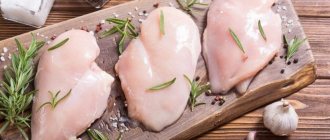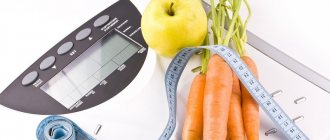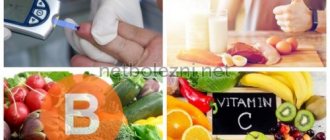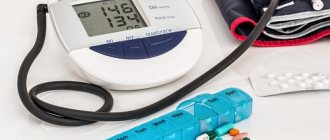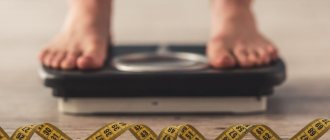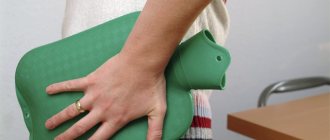General rules
First of all, let's find out what a therapeutic diet is.
Therapeutic nutrition, in medical terminology “medicinal table”, is prescribed for diseases and is an integral, and in some cases the main, component of treatment. Table No. 1, the Pevzner diet is prescribed for stomach diseases: acute and chronic gastritis , peptic ulcer . Table 1 is also prescribed for gastroduodenitis . Since this is a moderately gentle diet, it is indicated in the stage of recovery or mild exacerbation of the above diseases. It provides chemical, mechanical, as well as thermal sparing of the gastrointestinal tract with physiologically complete nutrition, since the daily diet contains 90-100 g of proteins, 100 g of fats and 420 g of carbohydrates. Calorie content - 2900-3000 kcal per day.
The main points of this diet are:
- Limiting secretion pathogens (broths) and irritants of the mucous membrane, which are spicy dishes and seasonings, raw vegetables.
- Elimination of difficult-to-digest foods and foods that linger in the stomach for a long time.
- The food is cooked and pureed. Baking without a pronounced crust is allowed. When the patient's condition improves, they switch to food without pureeing. In this regard, there are options - a wiped table and not a wiped one. If we are talking about fish and rough meats, then they can be served in pieces.
- Excessively cold and hot dishes are excluded. Cold food suppresses acid-forming functions, but slows down regenerative processes. Too hot also has an adverse effect on the mucous membrane.
- Salt is moderately limited.
- Meals are provided 5-6 times a day, including drinking milk or cream before bed.
Diet No. 1 for gastritis
In acute and exacerbation of chronic gastritis, it helps reduce inflammation and this is achieved by taking pureed and easily digestible food at the same time. After all, a violation of the diet and consumption of food that irritates the gastric mucosa is the cause of the disease, along with alcohol consumption, smoking and nervous tension. It follows that proper nutrition is important in the treatment of chronic gastritis and sequential administration of Diet 1A (up to 7 days), then 1B (up to two weeks) and No. 1 will achieve long-term remission. You can wipe dishes only for the first few days, and then it is enough to choose not rough varieties of meat (chicken, veal) and chew the food thoroughly.
Diet No. 1 (Table No. 1) for gastritis is followed for up to 2-3 months, and then it is recommended to switch to a common table, but with limitation, and sometimes with the exception of overly spicy dishes, seasonings and sauces. For gastritis with high acidity, it is recommended to limit easily digestible carbohydrates (jam, honey, sweets, sugar and other sweets), which reduces the excitability of the stomach and its secretory activity.
Diet number 1 for stomach ulcers
Creates all the conditions for the healing of ulcers, since it does not contain rough food and products that irritate the mucous membrane and stimulate gastric secretion. A sufficient amount of protein has a beneficial effect on reparative processes. Reducing the volume of food taken and split meals leads to mechanical sparing.
Peptic ulcer (stomach ulcer) and duodenal ulcer is a more severe disease and requires long-term drug treatment and dietary nutrition. In case of exacerbation, treatment begins with treatment Table 1A (more gentle, for two weeks). Then for two weeks the patient is recommended Table 1B (mushy and pureed food), and after that - minimally gentle No. 1 (all pureed), which is prescribed for up to six months.
The absence in food during this period of strong irritants that stimulate not only secretory activity, but also the nervous system (ear, meat, mushroom broth, strong tea, coffee, hot, spicy, fried foods, smoked foods, carbonated drinks, horseradish, marinades, mustard, alcohol) creates favorable conditions for successful treatment. Limiting table salt is also necessary, since salt stimulates acid formation in the stomach. Weak juice dishes include: milk, soft-boiled eggs, white crackers, cereals, sweet fruit juices, which must be present in the patient’s diet.
At the same time, the diet should have a high nutritional value (not to be confused with high calorie content), which is determined by the balance of the main food components, vitamins ( A , C , group B ) and mineral salts. Proteins stimulate the healing of ulcerative defects and bind hydrochloric acid in the stomach, which protects the mucous membrane. Fats suppress gastric secretion. In this case, preference is given to vegetable oils. They normalize impaired metabolic processes and promote ulcer repair. Milk is a valuable food product in this regard.
Usually, if patients feel well, their time on this diet is reduced and after 2-3 months. Allow the consumption of unprocessed food with the addition of raw vegetables and fruits. These include sweet plums, peaches, nectarines, apples, and vegetables - tomatoes. Switching to a common table involves regular meals and careful consumption of hot, spicy, too hot foods and alcohol. When carrying out anti-relapse treatment prescribed by a doctor, you should adhere to a gentle diet for 2-4 weeks (first Table No. 1B, and then No. 1).
Table No. 1 for illnesses
Let's look at the features of diet for some diseases.
For stomach ulcers
Table number 1 is indicated for exacerbation of the disease. The need to use varieties of medical diet - 1a and 1b arises only with severe exacerbation in the first days of the disease. Then the food is served boiled and not pureed. For stomach and duodenal ulcers, meals are taken up to 6 times a day; everything spicy, salty, smoked, and canned is removed from the diet.
As the ulcers scar, symptoms subside and health improves, they move on to the general table. Frequent meals and the optimal amount of protein in the diet are also recommended. Since the latter reduces the activity of glandular cells, which leads to a decrease in the production of gastric juice, and also has a neutralizing effect on it. And consuming soy flour before meals for a period of 4–6 weeks reduces the production of pepsin and normalizes the peristaltic function of the stomach. Recently, the influence of diet therapy on the healing time of ulcers has been questioned.
For gastroduodenitis
Gastroduodenitis is accompanied by damage to both the stomach and duodenum. If the pathology comes from the intestine itself, that is, there is primary duodenitis, not provoked by pathology of the pancreas (pancreatitis), gall bladder (cholecystitis, cholelithiasis) or biliary tract, then in this case table No. 1 is introduced.
The emphasis in nutrition is on limiting fats and carbohydrates (sugar, honey), irritating foods are excluded, the diet is low in salt - 5-6 g per day. Avoid foods that can cause fermentation in the intestines - legumes, baked goods, some vegetables (cabbage, radishes, turnips), carbonated and alcoholic drinks. Frequent meals are also necessary, avoiding hot and cold foods. Food is steamed, boiled, pureed.
For gastritis
Inflammatory diseases of the stomach are corrected by nutrition, taking into account the secretory function of the stomach. With reduced formation of gastric juice (autoimmune form of chronic gastritis) in the acute phase of the disease, all products that irritate the gastric mucosa are excluded:
- strong broths, rich soups;
- strong tea, coffee;
- salty dishes;
- smoked meats;
- coarse vegetable fiber;
- spicy foods;
- products with added spices.
For gastritis, meals are taken in small portions, every 2-3 hours. The amount of protein provided is slightly less than for peptic ulcers - about 15-20 g. The ratio of BZHU is 1: 1: 4.
After exiting the acute phase, the purpose of dietary nutrition is to stimulate the work of the gastric glands, aimed at increasing the formation of hydrochloric acid. Mechanical irritants are added to the diet - stale white bread, crackers, dry cookies, kefir, yogurt, diluted milk (if it is well tolerated). A fragmented diet and restrictions on fats and fried foods also remain.
For infectious gastritis, preference is given to table 1b with a diet of 4–5 times a day. Remove juicey, irritating dishes. Food comes in semi-liquid form, with carbohydrates limited, since the latter increase the activity of the stomach glands. Cooking is carried out without frying.
The diet includes mucous and milk soups with buckwheat, semolina, oatmeal, pearl barley, soft-boiled eggs, soufflé, quenelles, meat cutlets, and fish. From the second week of illness, the diet is expanded to table No. 1 with a gradual transition to the general table as recovery progresses.
With erosions in the stomach (erosive gastritis), nutrition is structured in the same way as with a peptic ulcer.
For GERD (gastroesophageal reflux disease)
For reflux, nutrition according to Pevzner has a number of features.
- The diet includes a high protein content, which helps to increase the tone of the lower esophageal sphincter. It is because of its deficiency that aggressive digestive juice from the stomach enters the esophagus, which disrupts the functioning of the organ.
- Avoid foods that increase pressure in the stomach and carbonated drinks.
- Limit fats as they slow down gastric emptying.
- Foods you should avoid: pork, beef, cold cuts, sea fish, rice, pasta, fresh bread, cream, butter, cheeses with a fat content of more than 20%, spices, pickles, citrus fruits, nuts.
Varieties
The varieties are Diet 1A and 1B , which differ from the main one in indications and method of processing food. Table 1A is indicated for severe exacerbation of peptic ulcer (for the first 6-8 days), exacerbation of chronic gastritis (for 4-5 days), for acute gastritis (for 2-3 days) and burn of the esophagus. Therapeutic nutrition provides maximum sparing, food is only pureed and in liquid form, given that patients are on bed rest.
Table 1B is prescribed after the previous one for the same diseases, but when the process subsides. Nutrition provides for significant sparing of the gastrointestinal tract, but since the patient’s condition is improving and he is on semi-bed rest, food is served in puree form. The varieties also include Table 1A surgical and 1B surgical, since they are prescribed after surgery on the gastrointestinal tract on the 3-4th day after the zero diet 0A, which is on the first two days. Surgical diets necessarily contain weak broths, as well as pureed cereal soups and steamed meat or fish souffle.
Table No. 1 after operations
When prescribing therapeutic nutrition according to Pevzner after operations, surgical modification of diet 1a and 1b is used.
Features of surgical table 1a:
- prescribed 2–3 days after surgery;
- provides maximum unloading of the gastrointestinal tract (gastrointestinal tract);
- easily digestible forms of nutrients are used;
- food comes with maximum sparing of the digestive tract - in crushed form;
- food temperature is less than 45 degrees;
- BJU ratio is 1:1:5, 50 g of protein and fat, 250 g of carbohydrates per day;
- energy value up to 1600 calories;
- additional enrichment of nutrition with vitamins and microelements;
- sharp restriction of salt to 5 g per day;
- additional liquid 1.5-1.8 l;
- frequent meals - up to 6 times a day, in portions of no more than 350 g at a time.
Patients are then transferred to table 1b as digestion is restored. Dishes are pureed and pureed, the temperature of hot dishes is up to 50 degrees, cold - more than 20 degrees. The BJU ratio changes slightly to 1:1:4(4.5), the calorie content of the diet increases to an average of 2500 calories, additional liquid to 2 liters, salt to 6 g.
The transition from diet 1a to 1b occurs gradually, first expanding on individual products. If well tolerated, new products are continued to be introduced. Be sure to monitor symptoms of digestive disorders (diarrhea, flatulence, increased peristalsis), and the appearance of pain. Products that cause such symptoms are excluded from the diet for a long time (up to several months).
The prescription of therapeutic diets is combined with the intake of special enteral mixtures - balanced foods with high nutritional value, enriched with vitamins and microelements. As the diet expands, the amount of nutritional mixtures is reduced. Let's take a closer look at the nutritional features after operations on the intestines and gall bladder.
After intestinal surgery
The diet should be aimed not only at ensuring the restoration of substances important for the functioning of the body lost during the intervention (electrolytes, water, proteins, fats, carbohydrates, vitamins, microelements, etc.), but also at the earliest possible activation of digestion.
Since it was “turned off” during the operation, absorption from the digestive tract is therefore impaired immediately after the operation. And now the task is to “start” digestion and absorption again, restore the normal composition of the microflora and generally normalize the functioning of the digestive tract.
On days 3–6 after surgery, therapeutic nutrition begins to be introduced; the start time is based on the patient’s condition. Too early a transition to natural nutrition after intestinal surgery significantly worsens the course of the recovery period.
Therapeutic nutrition is carried out through the appointment of table No. 0a, 1, 1b surgical. Surgical diets have a generally low nutritional value and are combined with the use of special nutritional mixtures for oral administration. A few days after surgery, patients' diet is expanded to surgical table 1a, which is prescribed for up to 4 days.
After another 10 days, a smooth transition is made to surgical diet 1b, and then to surgical diet number 1, while the pureed version will have to be followed for a long time. And in the first 3–4 weeks after discharge from the hospital, patients are prescribed surgical table No. 1 in a wiped form. After this, there is a transition to the unprocessed version of diet 1.
Good tolerance of a new dish indicates that the restoration of the digestive system is proceeding correctly, namely: the ability to produce digestive juices, digest incoming food and remove unnecessary contents from the intestines.
If any product is poorly tolerated, patients after intestinal surgery should not exercise their intestines, that is, when they specifically load the intestines with products that are poorly accepted by them so that they “get used” to them. These workouts can aggravate the deficiency of intestinal enzymes and provoke the development of irreversible phenomena.
With the development of intolerance to milk and dairy products - manifested by the inability to digest milk sugar lactose, whole milk should be excluded for a long period. This applies to a lesser extent to fermented milk products (kefir, cottage cheese, yogurt, sour cream). Dairy products can be replaced with soy products; they have a set of amino acids similar in chemical composition to milk proteins, but are superior to animal milk proteins due to unique biologically active substances.
After gallbladder surgery
The principles of therapeutic nutrition in the rehabilitation of patients who have undergone gallbladder removal have not changed significantly over the past decade. Usually the following scheme is followed:
- On the first day you cannot eat or drink.
- On the second day, they begin to introduce liquid a little at a time, gradually increasing it to 1 liter; you can drink in small sips. Mineral still water, rosehip decoction with gradual expansion to decoctions of dried fruits, weak tea, and low-fat kefir are allowed. All drinks come without added sugar. By the 3rd day, the total volume of liquid is brought to 1.5 liters.
- Then unsweetened vegetable and fruit juices (from pumpkin, carrots, beets, rose hips, apples), fruit jelly, mashed potatoes, tea with sugar, pureed soups with meat broth of the second or third cooking are introduced. Food intake is in small portions, such nutrition continues until the 5th day after surgery.
- After a week, the menu continues to expand: white bread crackers, savory cookies, dried porridges, pureed porridges (buckwheat, oatmeal, wheat) with water or half and half with milk, cottage cheese, twisted meat (beef, veal, chicken, rabbit), boiled fish, vegetable puree, fermented milk products.
- Starting from 1.5 weeks and up to 1.5 months, a gentle diet (all dishes are steamed or boiled).
Authorized Products
The first table diet according to Pevzner involves preparing first courses in potato broth or vegetable broth with pureed vegetables, pureed or boiled cereals (semolina, buckwheat, rolled oats, rice). You can eat milk noodle soups, as well as puree soups with the addition of pureed chicken or meat. Flour for seasoning soups is not fried, but only dried, an egg-milk mixture is added to them, and the finished ones are seasoned with butter or cream.
Steamed meat cutlets
Steamed and boiled dishes are prepared from lean meat without tendons, fascia and skin. For this purpose, beef, young lamb and lean pork, chicken and turkey, tongue, and liver are used. You can use them to prepare steamed cutlets, dumplings, aspic, soufflé, meatballs, mashed potatoes, zrazy, beef stroganoff (only from pre-boiled meat). Boiled meat is allowed - veal, chicken, rabbit and meat baked in the oven. Low-fat types of fish are steamed and served in pieces (the skin is first removed) or in the form of meatballs, cutlets, meatballs, etc.
Wheat bread is allowed stale (yesterday's) or dried. You can use dry biscuit or biscuits. Once a week you can allow baked savory pies with apples, jam or cottage cheese, meat or fish. Semolina, rice, buckwheat or oatmeal, noodles or pasta are added to garnishes and soups. Porridge can be boiled in milk or water, boiled well until semi-viscous, or pureed (buckwheat). It is allowed to make steam soufflés and puddings with the addition of cottage cheese from cereals.
Vegetables (potatoes, beets, young peas, carrots, cauliflower) are steamed, pureed and served as a side dish in the form of puree and soufflé. Only pumpkin and zucchini, as well as ripe, non-acidic tomatoes, can be ungrated. Dill is added in small quantities to soups. Butter and vegetable oil are added to prepared dishes.
Among dairy products, milk and cream, yogurt and kefir (non-acidic), fresh non-acidic cottage cheese, curd cheese and sour cream are allowed. You can use cottage cheese to make lazy dumplings, baked cheesecakes, and puddings. Allowed infrequently are mild cheese in grated form, 2 eggs twice a week, which are cooked soft-boiled or in the form of an omelet and egg porridge. Among the appetizers on a fresh table, you can allow a salad of boiled vegetables, boiled meat and fish, liver pate, doctor's or milk sausage, jellied fish in a vegetable broth, lean herring, sturgeon caviar and lean ham.
Sweet desserts are prepared by steaming pureed berries with the addition of semolina. Sweet berries and fruits are allowed when baked or boiled. You can use them to make purees, jelly, jelly, sambuca, and compotes. Meringues, milk jelly, marshmallows, marshmallows, non-sour jam, and honey are allowed as desserts. Drinks include fruit juices, rosehip infusion, tea with milk or cream, and weak coffee with milk.
Table of permitted products
| Proteins, g | Fats, g | Carbohydrates, g | Calories, kcal | |
Vegetables and greens | ||||
| zucchini | 0,6 | 0,3 | 4,6 | 24 |
| cauliflower | 2,5 | 0,3 | 5,4 | 30 |
| potato | 2,0 | 0,4 | 18,1 | 80 |
| carrot | 1,3 | 0,1 | 6,9 | 32 |
| beet | 1,5 | 0,1 | 8,8 | 40 |
| pumpkin | 1,3 | 0,3 | 7,7 | 28 |
Fruits | ||||
| apricots | 0,9 | 0,1 | 10,8 | 41 |
| watermelon | 0,6 | 0,1 | 5,8 | 25 |
| bananas | 1,5 | 0,2 | 21,8 | 95 |
| melon | 0,6 | 0,3 | 7,4 | 33 |
| nectarine | 0,9 | 0,2 | 11,8 | 48 |
| peaches | 0,9 | 0,1 | 11,3 | 46 |
| apples | 0,4 | 0,4 | 9,8 | 47 |
Berries | ||||
| strawberry | 0,8 | 0,4 | 7,5 | 41 |
| raspberries | 0,8 | 0,5 | 8,3 | 46 |
Cereals and porridges | ||||
| buckwheat (kernel) | 12,6 | 3,3 | 62,1 | 313 |
| semolina | 10,3 | 1,0 | 73,3 | 328 |
| cereals | 11,9 | 7,2 | 69,3 | 366 |
| white rice | 6,7 | 0,7 | 78,9 | 344 |
Bakery products | ||||
| white bread crackers | 11,2 | 1,4 | 72,2 | 331 |
Confectionery | ||||
| jam | 0,3 | 0,2 | 63,0 | 263 |
| jelly | 2,7 | 0,0 | 17,9 | 79 |
| marshmallows | 0,8 | 0,0 | 78,5 | 304 |
| meringues | 2,6 | 20,8 | 60,5 | 440 |
| paste | 0,5 | 0,0 | 80,8 | 310 |
| Maria cookies | 8,7 | 8,8 | 70,9 | 400 |
Raw materials and seasonings | ||||
| honey | 0,8 | 0,0 | 81,5 | 329 |
| sugar | 0,0 | 0,0 | 99,7 | 398 |
| milk sauce | 2,0 | 7,1 | 5,2 | 84 |
Dairy | ||||
| milk | 3,2 | 3,6 | 4,8 | 64 |
| kefir | 3,4 | 2,0 | 4,7 | 51 |
| cream | 2,8 | 20,0 | 3,7 | 205 |
| sour cream | 2,8 | 20,0 | 3,2 | 206 |
| curdled milk | 2,9 | 2,5 | 4,1 | 53 |
Cheeses and cottage cheese | ||||
| cottage cheese | 17,2 | 5,0 | 1,8 | 121 |
Meat products | ||||
| boiled beef | 25,8 | 16,8 | 0,0 | 254 |
| beef liver | 17,4 | 3,1 | 0,0 | 98 |
| boiled beef tongue | 23,9 | 15,0 | 0,0 | 231 |
| boiled veal | 30,7 | 0,9 | 0,0 | 131 |
| rabbit | 21,0 | 8,0 | 0,0 | 156 |
Bird | ||||
| boiled chicken | 25,2 | 7,4 | 0,0 | 170 |
| turkey | 19,2 | 0,7 | 0,0 | 84 |
Eggs | ||||
| chicken eggs | 12,7 | 10,9 | 0,7 | 157 |
Fish and seafood | ||||
| black caviar | 28,0 | 9,7 | 0,0 | 203 |
| salmon caviar granular | 32,0 | 15,0 | 0,0 | 263 |
Oils and fats | ||||
| butter | 0,5 | 82,5 | 0,8 | 748 |
| ghee | 0,2 | 99,0 | 0,0 | 892 |
Non-alcoholic drinks | ||||
| mineral water | 0,0 | 0,0 | 0,0 | — |
| coffee with milk and sugar | 0,7 | 1,0 | 11,2 | 58 |
| black tea with milk and sugar | 0,7 | 0,8 | 8,2 | 43 |
Juices and compotes | ||||
| apricot juice | 0,9 | 0,1 | 9,0 | 38 |
| carrot juice | 1,1 | 0,1 | 6,4 | 28 |
| pumpkin juice | 0,0 | 0,0 | 9,0 | 38 |
| * data is per 100 g of product | ||||
Diet table 1: products
Acceptable foods and dishes can be divided into the following groups:
- Soups: slimy consistency, you can add semolina, oatmeal, pearl barley or rice, cream or butter;
- Cereals: liquid slimy porridges made from semolina, pureed buckwheat, rice or oatmeal. You can also add cream or milk;
- Meat and fish: lean veal, beef, chicken and turkey, without skin, fat, fascia and tendons. To prepare it, you need to boil it, pass it through a grater or meat grinder, and use it as a puree or soufflé;
shutterstock.com
- Eggs: soft-boiled or steamed omelet, no more than three eggs per day;
- Fruits and berries: sweet fruits, boiled or baked; compotes, rosehip decoction;
- Dairy products: milk, cream, steam soufflé from freshly prepared pureed cottage cheese.
- Drinks: weak tea with milk or cream, weak cocoa or coffee with milk;
- Additionally: jelly, sweet fruit jelly, milk jelly, honey.
- Excluded: vegetables, herbs, sweets and flour.
Dishes are prepared in unsalted butter or refined vegetable oil. Other types of oils are excluded.
shutterstock.com
Fully or partially limited products
A complete exclusion of vegetables rich in fiber (radish, turnip, white cabbage, beans, peas, rutabaga, unpeeled fruits) and foods with connective tissue (cartilage, sinew, skin of birds and fish) is provided. The following are excluded from meat products: fatty pork, duck, lamb, goose, canned meat and smoked meats. There is also a ban on highly extractive broths, rich vegetable decoctions and soups cooked with them. It is necessary to exclude cabbage soup, okroshka and borscht from the first courses. The following vegetables and herbs are excluded: sorrel, dill, parsley, spinach, onions, as they contain large amounts of organic acids or irritating essential oils. Mushrooms are a difficult to digest product.
Pickled and pickled vegetables and canned vegetables, which cause increased secretion of gastric juice, are excluded from the diet. Millet, pearl barley, barley and corn, as they are difficult to digest. Fatty fish and canned fish are prohibited. It should be taken into account that hard-boiled and fried eggs are poorly digestible, so they are excluded in this form. Do not consume meat sauces, tomato sauce, horseradish, mustard, pepper that irritate the gastric mucosa; avoid cooking fat and animal fats. Any fresh bread, butter and puff pastry, dried fruit, chocolate and ice cream are prohibited. You should not consume dairy products with high acidity, which stimulate secretion. For the same reason, sour and unripe fruits and berries are excluded. Limit sour cream.
Table of prohibited products
| Proteins, g | Fats, g | Carbohydrates, g | Calories, kcal | |
Vegetables and greens | ||||
| vegetables legumes | 9,1 | 1,6 | 27,0 | 168 |
| swede | 1,2 | 0,1 | 7,7 | 37 |
| cabbage | 1,8 | 0,1 | 4,7 | 27 |
| sauerkraut | 1,8 | 0,1 | 4,4 | 19 |
| green onion | 1,3 | 0,0 | 4,6 | 19 |
| bulb onions | 1,4 | 0,0 | 10,4 | 41 |
| cucumbers | 0,8 | 0,1 | 2,8 | 15 |
| canned cucumbers | 2,8 | 0,0 | 1,3 | 16 |
| white radish | 1,4 | 0,0 | 4,1 | 21 |
| turnip | 1,5 | 0,1 | 6,2 | 30 |
| canned tomatoes | 1,1 | 0,1 | 3,5 | 20 |
| horseradish | 3,2 | 0,4 | 10,5 | 56 |
| spinach | 2,9 | 0,3 | 2,0 | 22 |
| sorrel | 1,5 | 0,3 | 2,9 | 19 |
Mushrooms | ||||
| mushrooms | 3,5 | 2,0 | 2,5 | 30 |
Cereals and porridges | ||||
| corn grits | 8,3 | 1,2 | 75,0 | 337 |
| pearl barley | 9,3 | 1,1 | 73,7 | 320 |
| millet cereal | 11,5 | 3,3 | 69,3 | 348 |
| barley grits | 10,4 | 1,3 | 66,3 | 324 |
Confectionery | ||||
| candies | 4,3 | 19,8 | 67,5 | 453 |
Ice cream | ||||
| ice cream | 3,7 | 6,9 | 22,1 | 189 |
Cakes | ||||
| cake | 4,4 | 23,4 | 45,2 | 407 |
Raw materials and seasonings | ||||
| mustard | 5,7 | 6,4 | 22,0 | 162 |
| ginger | 1,8 | 0,8 | 15,8 | 80 |
| ketchup | 1,8 | 1,0 | 22,2 | 93 |
| mayonnaise | 2,4 | 67,0 | 3,9 | 627 |
| ground black pepper | 10,4 | 3,3 | 38,7 | 251 |
| chilli | 2,0 | 0,2 | 9,5 | 40 |
Meat products | ||||
| pork | 16,0 | 21,6 | 0,0 | 259 |
| ham | 22,6 | 20,9 | 0,0 | 279 |
Sausages | ||||
| dry-cured sausage | 24,1 | 38,3 | 1,0 | 455 |
| sausages | 10,1 | 31,6 | 1,9 | 332 |
| sausages | 12,3 | 25,3 | 0,0 | 277 |
Bird | ||||
| smoked chicken | 27,5 | 8,2 | 0,0 | 184 |
| duck | 16,5 | 61,2 | 0,0 | 346 |
| smoked duck | 19,0 | 28,4 | 0,0 | 337 |
| goose | 16,1 | 33,3 | 0,0 | 364 |
Fish and seafood | ||||
| dried fish | 17,5 | 4,6 | 0,0 | 139 |
| smoked fish | 26,8 | 9,9 | 0,0 | 196 |
| canned fish | 17,5 | 2,0 | 0,0 | 88 |
Oils and fats | ||||
| animal fat | 0,0 | 99,7 | 0,0 | 897 |
| cooking fat | 0,0 | 99,7 | 0,0 | 897 |
Non-alcoholic drinks | ||||
| bread kvass | 0,2 | 0,0 | 5,2 | 27 |
| * data is per 100 g of product | ||||
General characteristics of dietary table No. 1B
Diet No. 1B fully satisfies a person’s physiological needs for energy and nutrients in a hospital setting. Diet No. 1B provides less severe protection of the stomach from mechanical, chemical and temperature irritation than diet 1A. All dishes are liquid and mushy. Excluded are dishes and products that have a strong effect on the walls and mucous membranes, stimulate secretion, are difficult to digest, hot and cold dishes. Diet No. 1B provides for fractional meals at least 6 times a day, in small portions. Milk is recommended before bed. The main difference between diet 1B and diet 1A is the gradual increase in calorie intake and the proportion of nutrients.
Menu (Power Mode)
As we found out, for gastritis and peptic ulcers, the basis is the therapeutic Diet 1st table. The menu for the week should include alternating a variety of protein (beef, chicken, fish, rabbit, turkey, cottage cheese) and cereal dishes.
Below is a menu for the day and a sample menu for the week; it can be modified without going beyond the permitted products and observing the basic principles of heat treatment. In this case, you need to take into account what diet you are prescribed - with pureed dishes or not pureed. Many people do not tolerate milk well, so you can drink it in small quantities and warm, add it to tea and weak coffee. It is also permissible to use non-acidic kefir or yogurt.
Monday
| Breakfast |
|
| Lunch |
|
| Dinner |
|
| Afternoon snack |
|
| Dinner |
|
| For the night |
|
Tuesday
| Breakfast |
|
| Lunch |
|
| Dinner |
|
| Afternoon snack |
|
| Dinner |
|
| For the night |
|
Wednesday
| Breakfast |
|
| Lunch |
|
| Dinner |
|
| Afternoon snack |
|
| Dinner |
|
| For the night |
|
Thursday
| Breakfast |
|
| Lunch |
|
| Dinner |
|
| Afternoon snack |
|
| Dinner |
|
| For the night |
|
Friday
| Breakfast |
|
| Lunch |
|
| Dinner |
|
| Afternoon snack |
|
| Dinner |
|
| For the night |
|
Saturday
| Breakfast |
|
| Lunch |
|
| Dinner |
|
| Afternoon snack |
|
| Dinner |
|
| For the night |
|
Sunday
| Breakfast |
|
| Lunch |
|
| Dinner |
|
| Afternoon snack |
|
| Dinner |
|
| For the night |
|
Principles of healthy nutrition
Table No. 1b sets the goal of limiting mechanical, chemical, and thermal aggression on the stomach as much as possible. Its observance implies sparing the gastrointestinal tract, relieving inflammation, accelerating healing of residual ulcers, and most importantly, providing the patient with a balanced and healthy diet.
All products must be crushed to a puree or in liquid form, and dishes must be served warm. Solid cold (below 15 degrees) or hot (above 65 degrees) food can have a detrimental effect on the digestive system and injure the already irritated walls of the stomach.
The energy value of the daily diet is 2400-2600 calories, provided that physical activity is limited to walking and light labor. Intensive training processes and heavy lifting are contraindicated due to the underlying disease.
The diet has the following chemical composition:
- 90 grams of proteins, mainly of animal origin;
- 100 grams of fat, animal proteins are also preferred;
- 300-350 grams of complex carbohydrates.
Additionally, it is recommended to take vitamins A and ascorbic acid.
The daily fluid intake is 1.5 liters, and the amount of salt is limited to 8 grams. This means that the diet will get rid of edema and swelling, which are the result of stagnation of fluid in the body.
Table No. 1b is prescribed for a short period of 5-7 days, after which the patient is recommended to switch to table No. 1. To consolidate the treatment and complete recovery, dietary nutrition will have to be followed for at least 3-4 months.
Diet No. 1, cooking recipes
Below are recipes for first table dishes that are easy to prepare at home. You need to know that the “poaching” cooking method is used for products with a high water content and having a delicate consistency: fish, many vegetables, products made from quenelle mass. It is carried out in saucepans or pans with a closed lid in water, covering no more than 1/3 of the product.
When steaming, the product should not come into contact with the liquid and is steamed while boiling. Therefore, the loss of nutrients is less than with the previous cooking method. Steam cooking is best done in a double boiler, or, if one is not available, in a regular pan with a mesh liner. Cooking in a water bath is carried out at 40-70°C. Prepare in a container, which is placed in another with hot water poured in. In diets. In this way, omelettes, puddings and egg porridge are prepared.
First meal
Oatmeal soup with pureed vegetables and vegetable oil
Ingredients: ground oatmeal or oatmeal, 50 ml cream, 100 g vegetables, vegetable oil, salt, 2 glasses of water.
Boil potatoes, zucchini and carrots, blend in a blender. Dilute the mixture with the vegetable broth in which the vegetables were cooked, bring to a boil and add ground oatmeal and cook for 2-3 minutes. Pour in vegetable oil and cream, salt.
Cream soup with rice flour, zucchini and carrots
Peel, cut and cook zucchini and carrots, then rub through a metal sieve. Mix rice flour with pureed vegetables, add water, season with beaten egg-milk mixture, add butter, salt and bring to a boil.
Ingredients: 50 g rice flour, 200 g zucchini and 150 g carrots, half an egg, 150 g milk, butter, salt.
Second courses
Fish dumplings
Products: 300 g fish - 50 bread, 50 ml milk, melted butter.
Grind the fish fillet through a meat grinder, add white bread soaked in milk (it can be replaced with semolina). Mix well and add salt. Using two tablespoons, form oblong quenelles and place in a saucepan, fill 1/3 with water, cover with a lid and simmer for 5-7 minutes. Ready to pour oil.
Steamed chicken cutlets with dill
Grind the chicken breast through a meat grinder, add soaked white bread, melted butter, dill and salt to the minced meat. Form cutlets and place in a steamer container. Cook for 10-12 minutes. Ready to drizzle with melted butter.
Ingredients: 500 chicken fillets, 150 g of bread, 100 ml of milk, butter, salt, dill.
Egg porridge
The eggs are diluted with milk and beaten, salt and butter are added, the mixture is poured into a bowl, which is placed in a pan of water. Cook while stirring until the consistency of porridge. It can be prepared in another way: the egg mass is poured into a pan with warm water (in a small amount) and cooked like regular porridge until thickened. The remaining water is filtered off.
Ingredients: 2 eggs, 60 ml milk, salt, 2 tsp. oils
Dessert
Carrot soufflé with cottage cheese and honey
Products: 500 g carrots - 250 g cottage cheese, 150 g milk, 1 des. l. sugar, 1 egg, 50 g semolina, butter.
Cut the carrots into pieces, add milk and boil until tender. Rub or beat in a blender, add pureed cottage cheese, sugar, yolk and semolina. Mix the mixture thoroughly and add the beaten egg whites last. Place in a suitable container, greased with oil, and steam. Serve with honey.
Meringues
Beat the whites until foamy and add half the powder. Add all the powdered sugar while stirring gently with a spatula. Do not add powder at the beginning of beating the egg whites! Spoon the protein-sugar mixture onto a baking sheet lined with parchment paper. Bake at low temperature 80-1000 for 1-1.5 hours (this depends on the size).
Ingredients: 4 egg whites, 1 cup powdered sugar.
Recipes
All the recipes below are suitable for people who follow the Pevzner diet table 1.
First meal
Vegetable soup with beets
Take: 2 medium beets, 2 carrots, 2-3 potatoes, 1 onion, sour cream, dill, salt. Preparation: Boil the beets whole in their skins. While the beets are cooking, peel and chop the onions, potatoes, and carrots. Grate the carrots. Pour water into a saucepan, place the chopped vegetables in it, and put on fire. Cool the beets, remove the peel, grate them, and place them in the pan. Before turning off the soup, add salt and dill. Serve with sour cream.
Pumpkin soup with croutons
Take half a medium pumpkin (about 500 g), 1 onion, 1 carrot, 50 g low-fat cream, salt, crackers. Preparation: Peel the onions and carrots. Finely chop the onion, grate the carrots, heat the vegetables in oil in a frying pan for 1 minute. Peel the pumpkin and cut it into small pieces to make it cook faster. Place it in a saucepan and add some water and the rest of the vegetables. Once the vegetables are cooked, cool a little and blend with a blender, add salt, add cream, and bring to a boil. Serve the puree soup with croutons.
Second courses
Turkey with zucchini
Take: 500 g turkey fillet, 2 onions, 1 large carrot, 1 medium zucchini, sour cream, dill, salt, vegetable oil. Preparation: Wash and cut the turkey. Peel the vegetables, cut them, lightly simmer the onions and carrots in a frying pan with a little water. Mix sour cream with salt and pour it over the vegetables, stir. Place the vegetables in the baking sleeve, then the turkey, secure the bag tightly on both sides and place in a preheated oven for 1 hour. Serve the dish with finely chopped dill.
Fish quenelles
Take: 500 g fish fillet (or fish with few bones), 2 onions, 100 g bread, dill, salt, half a glass of cream, egg. Preparation: wash the fish, remove bones. Cut into small pieces. Peel the onion and cut into quarters. Soak the bread in cream. Then the fish, onions and bread need to be twisted in a meat grinder. If you decide to take a bony fish, for example, pike, then you will need to twist it 2 times in order to grind the small bones well.
Add salt, finely chopped dill, egg to the minced meat, stir well. Place a pan of water on the gas. While the water is heating, make balls from the minced meat. As soon as the water boils well, carefully lower the balls into the water, stirring lightly for 15 minutes. Then place the quenelles in a dish and serve with sour cream and herbs.
Salads
Beetroot and chicken breast salad
Take: 1 medium beet, 3 potatoes, 150 g chicken breast, sour cream, dill, onion. Preparation: Boil vegetables and meat. Grate the beets, cut the potatoes into cubes, finely chop the breast. Chop the onion and pour boiling water for 5 minutes to remove the bitterness. Mix vegetables with breast, season with sour cream, sprinkle with dill on top.
Carrot, apple, raisin salad
Take: 2 carrots, 1 apple, half a glass of raisins, sour cream. Preparation: Peel the carrots and grate them. Remove the core from the apple, cut off the peel, and cut into cubes. Rinse the raisins well and soak in boiling water for 10 minutes. Mix carrots, apples, raisins with sour cream. Salad ready.
Dessert
Curd cookies
Take: 2 cups of flour, half a cup of water, half a cup of vegetable oil, egg, 1 tbsp. sugar, 300 g of cottage cheese, soda on the tip of a knife. Preparation: mix water, butter, sugar, egg, add cottage cheese, then flour. Stir well. The dough should turn out like thick sour cream. Grease a baking sheet with oil and spoon the dough onto the sheet. You can use a special cookie cutter. Bake for 30 minutes.
For children
Gastritis is often recorded in even young children: problems with appetite and belching appear, the child complains of pain in the stomach. It is very important to properly organize the child’s diet: five times a day at the same time. Children are also prescribed the 1st dietary table and its varieties depending on the stage (exacerbation or recovery period).
The diet and method of processing food does not differ from that of adults. Food should only be freshly prepared, and not “prepared for future use.” Of course, this requires time and care on the part of parents. When cooking, it is not permissible to use any flavoring additives - only natural food.
The therapeutic effect is achieved due to the absence of foods high in coarse fiber in the diet, as well as reducing the volume of food taken. This is especially important for children. The volume of food and overdistension of the stomach affect its secretory and motor function. You also need to consider the length of time the food stays in the stomach. So, if boiled vegetables and boiled meat linger in the stomach for 3-4 hours, then fried meat, lentil puree, herring and peas for up to 4-5 hours. The shortest digestion time is observed when taking broth and soft-boiled eggs - 1-2 hours and 2-3 hours for digestion of milk, jelly, compotes, scrambled eggs, stewed fish, dry liver and white bread.
It is important to take into account the fact that the number of gastric glands depends on the age of the child: in a newborn - 2 million, at 10 years old - 17 million, and at 15 years old - 22 million. In this regard, it is obvious that the diet should be individualized depending on age and degree of gastric secretion and its disorders.
As for the duration of therapeutic nutrition, it depends on the severity of the process. For acute gastritis - a short period of 2-3 weeks, and for chronic lesions - for a longer period (several months). As you recover, you need to use a “zigzag” diet: expanding the diet for a short time and then returning to a gentle diet again. Such nutrition has a training effect and revitalizes regenerative processes. Even with recovery, you should not give your child canned food and limit fried foods and rough foods.
Second courses
Various side dishes for this type of diet are prepared from grains and vegetables. It is allowed to eat pasta made from durum wheat. After cooking, they are thoroughly washed with water and no oil is added. Vegetables and pasta can be baked without oil with meat or other approved products.
The following dishes are an unusual and tasty addition to the dinner table No. 1.
Potato and carrot puree
Ingredients:
- Medium-sized potatoes - 4-5 pieces;
- Carrots - 2 - 3 pcs;
- Butter - 2 tbsp. l..;
- Low-fat milk - 200 ml.
Mode of production:
- Peel the vegetables and chop into medium-sized pieces.
- Pour in water and cook over low heat until boiling.
- Drain the water and grind the vegetables in a blender.
- Heat milk and add to vegetables along with ghee.
- Stir until a homogeneous mixture is obtained.
Vegetables with cheese in pots
Ingredients:
- Pumpkin - 500 g;
- Zucchini - 500 g;
- Potatoes - 300 g;
- Cheese cheese - 200 g;
- Butter - 2 tbsp. l.
Mode of production:
- Peel and cut the vegetables into cubes, chop the cheese.
- In a clay pot, distribute the ingredients in the following layers: potatoes, pumpkin, zucchini, feta cheese.
- Put in butter.
- Cover the pan with foil and place in the oven for 50 minutes, preheated to 10 degrees.
- Turn off the oven and let the pots cool for another 10-15 minutes.
According to Pevzner (a famous gastroenterologist who produced meals from 1 to 15 tables), Diet 1 is the essential diet. Compliance with which does not present any difficulties, as it allows you to consume more vegetables, cereals and meat, with which you can prepare a large amount of tasty and healthy food. The main thing is to take into account the list of prohibited products, including the exact rules for their production for medicinal nutritional purposes.
Advantages and disadvantages
| pros | Minuses |
|
|
Who makes the menu
The menu is formed by a nutritionist, senior cook and dietician based on requests from departments.
For the season, the city hospital prepares planned weekly menus, and layout cards are approved for individual dishes. The Medical Nutrition Council, consisting of at least 7 doctors and nurses, is responsible for coordinating all work on organizing the hospital table. Responsibility for menu planning and quality control lies with the head physician of the hospital.
The medical dietitian is responsible for organizing hospital nutrition.
Reviews and results
Medical nutrition does not mean monotony and tastelessness of dishes. You can diversify it with new dishes - just don’t be lazy and do everything to restore your health. Reviews from patients indicate that this diet has a beneficial effect on the gastrointestinal tract. Already in the first week, pain and discomfort in the stomach decrease, belching and heartburn .
- “... For peptic ulcers, diet table number 1 was prescribed, and I followed it completely for five months! I admit that the first time was painful, and I often “violated” it, but the ulcer immediately began to remind itself. After a month it became much better, and after five months nothing bothered me anymore and I began to eat everything. Nutritional therapy makes sense";
- “... I cooked this way for my child when, at the age of 5, he developed belching, poor appetite, and constipation. After the examination, they diagnosed gastritis and told me to definitely monitor my diet. I don’t even know why this happened - he goes to kindergarten, where he has proper nutrition”;
- “...Table number one is my main diet during an exacerbation of an ulcer. It’s a pity that due to the nature of my work (frequent business trips), I can’t eat for so long and return to it when I’m at home. You immediately feel relief, it doesn’t hurt and doesn’t suck in the pit of your stomach. It’s bad that now you can’t find catering with dietary dishes”;
- “... I really regret that I didn’t stick to the diet at one time, when there were exacerbations of the ulcer up to three times a year. Now after the perforation and surgery I’m simply forced to eat right. Yes, it’s difficult and troublesome, but my wife organized everything for me: I take trays of porridge, stewed vegetables and boiled chicken or diet meatballs to work. Sometimes I make “quick” porridge for a snack.”
Varieties of diet No. 1
- Table l A. The use of a diet helps protect the mucous membrane of the gastrointestinal tract, which allows erosion and ulcers to heal faster. Diet No. 1 is recommended for 1 week during exacerbation of ulcers and gastritis. Foods should be consumed every 3 hours, for example, porridge in milk, soup, steamed omelet, jelly. And at night a glass of warm milk.
- Table 1B. After 1 week of following diet 1A, diet No. 1B is prescribed. This occurs during remission of a gastric ulcer. The essence of this subspecies: additionally add dried white bread, vegetable puree, fish and meat cutlets or natural lean meat. Dishes are prepared pureed.
- Table 1. This type of diet comes into effect with the possibility of completely curing peptic ulcers. This food system includes dishes made from minced meat.
Excluded foods and dishes of dietary table No. 1B
Foods that require active activity of the gastrointestinal tract, cause pain, stimulate secretion, and irritate the walls of the gastrointestinal tract should be excluded from the diet. Excluded are bread and bakery products, vegetables (except potatoes, carrots, cauliflower), snacks, pasta, coffee, cocoa, pickles, smoked foods, canned food, marinades, seasonings, sauces, carbonated drinks (including kvass). Also exclude strong tea, concentrated juices, compotes, meat and fish broths, fried and stewed dishes, mushrooms, butter dough, fermented milk products, sharp cheeses, coarse cereals (millet, corn, barley and pearl barley), sorrel, onions, cucumbers, tomatoes, legumes, white cabbage, spinach, turnips, radishes, radishes, sour fruits and berries.
Chemical composition and energy value of dietary table No. 1B
Proteins: 90 g (at least 50% animal proteins). Fats: 80 g (at least 30% vegetable fats). Carbohydrates: 300–350 g (no more than 30 g of simple carbohydrates). Daily calorie content: 2,200 – 2,500 kcal. Free liquid: 1.5–2 l. Table salt: up to 6–8 g. Vitamins: retinol (A) 2 mg, riboflavin (B2) 4 mg, thiamine (B1) 4 mg, nicotinic acid (B3) 30 mg, ascorbic acid (C) 100 mg. Macroelements: calcium 0.8 g, magnesium 0.5 g, phosphorus 1.2 g. Microelements: iron 15 mg. Optimal food temperature: from 20 to 60 degrees Celsius.
